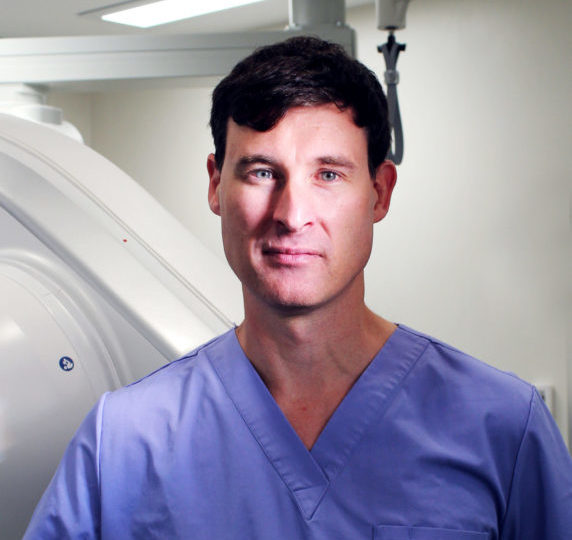Researchers at the University of Sydney have used a cancer patient’s breathing signal to guide the acquisition of a pre-treatment CBCT scan, commonly used when planning radiotherapy for cancer patients. This milestone scan marks the beginning of the ADAPT clinical trial, which is expected to demonstrate a dramatic improvement in image quality whilst reducing imaging time and radiation dose by 75% for cancer patients.
In current cancer imaging, patients are imaged continuously as they breathe. The motion of the lungs during imaging results in blurring and streaks which degrade the clarity of the image. In the ADAPT Trial, the patient’s breathing signal is used to adapt and move the imaging machine and also to determine the optimum time in the breathing cycle to acquire the image, resulting in dramatically clearer and more accurate images, with a lower radiation dose delivered to the patient.
“Clearer images are integral to providing even more effective radiotherapy treatment. The better we can see the cancer, the more accurately we can treat it.” says A/Prof Ricky O’Brien, who is leading the trial at the University of Sydney in collaboration with Liverpool Hospital. The technology was the subject of an NHMRC grant and achievement award in 2011 which topped 3500 grant applications.
“The ADAPT Trial is the touchpoint where the core concept of the ACRF Image X Institute’s Patient Connected Imaging Program begins to have a real-world impact on the lives of cancer patients.” Connecting the patient’s physiological signals to the imaging system signifies a major step forward in cancer imaging technology, which can in turn result in a more personalised, effective treatment for each patient.”, says Professor Paul Keall, director of the ACRF Image X Institute at the University of Sydney
The ADAPT trial (full name Adaptive CT acquisition for personalised thoracic imaging: A Phase 1 Pilot Study on the Use of Respiratory Motion Guided 4DCBCT for Lung Cancer Radiotherapy) is the result of collaborations forged between ACRF Image X Institute, the Netherlands Cancer Institute and Liverpool Hospital.
